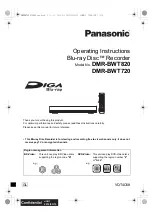
100/180 MM GRAPHICS RECORDER: USER GUIDE
HA261742
Issue 16 Nov 04
User Guide
Page 68
4.3.3 CHANNEL/ALARM CONFIGURATION (Cont.)
PARAMETERS
Figures 4.3.3d, e and f illustrate the following terms for the different alarm types.
Threshold
For Absolute alarms, this defines the value (in engineering units) at which an alarm is triggered. The
alarm also returns to its non-active state at this value unless a threshold value has been set, If a dwell
value is set, the alarm does not become active until this dwell time has elapsed.
Hysteresis
Defines a 'deadband' (in engineering units) to eliminate spurious triggering if the signal value is hovering
around the trigger point. The deadband lies:
Below Absolute High thresholds
Above Absolute Low thresholds
Outside the deviation band for Deviation-in alarms
Inside the deviation band for Deviation-out alarms.
Dwell
Allows a dwell period to be entered in seconds.
The alarm does not take effect until this period has
expired. If an alarm clears before the dwell period
has expired, the alarm is ignored.
Reference
For Deviation alarms, this is the central value of the
deviation band.
Deviation
For Deviation alarms, this value defines the width
of the deviation band, each side of the reference value. I.E. the total width of the deviation band is 2 x
Deviation value.
Amount
For Rate-of-change alarms, this value defines the amount by which the signal value would have to
change, within the 'Change Time' period (below), in order for the alarm to become active.
Change Time
For Rate-of-change alarms, this selects the time period (Per second, Per minute, Per hour) within which
the change in signal value must exceed the Amount value (entered in the preceding field) in order for the
alarm to become active.
Average time
For rate-of-change alarms, this allows an average period to be entered for signal smoothing.
EXAMPLE
Threshold = 100 units; Hysteresis = 5 units
A high alarm becomes active when its input rises
above 100 and remains active until its value falls
below 95 units. A low alarm becomes active when
its input falls below 100 units, and remains active
until its input rises above 105 units.











































